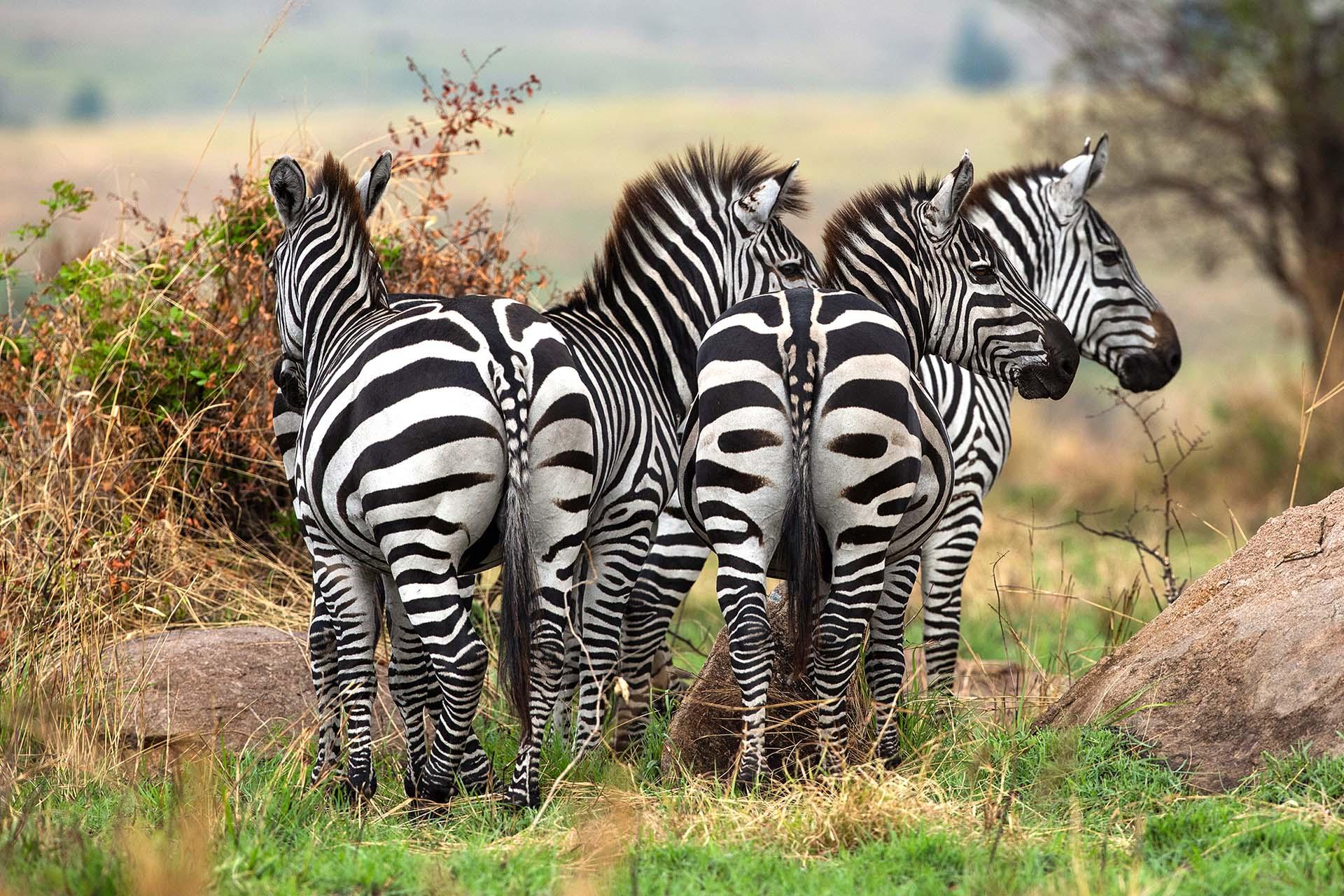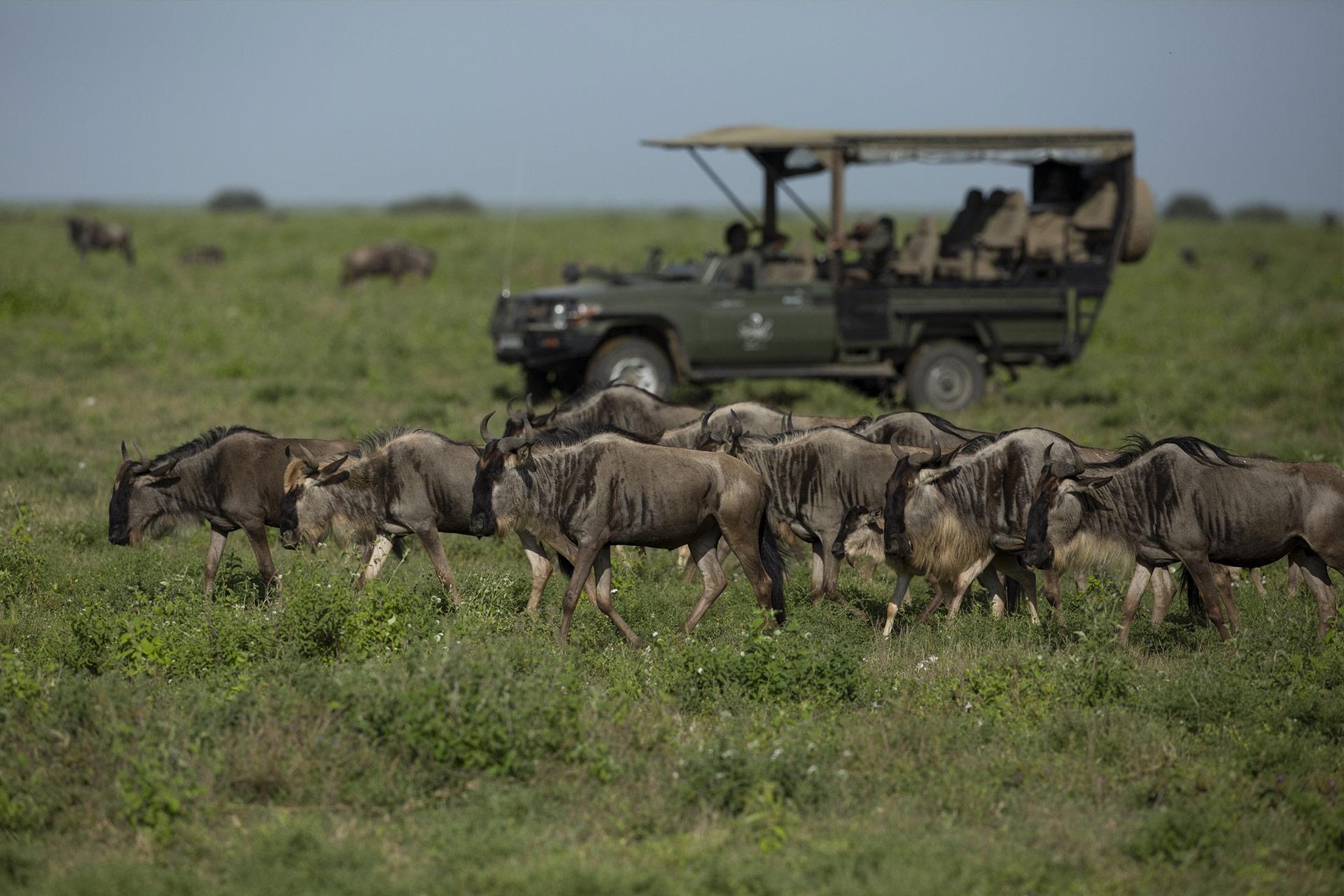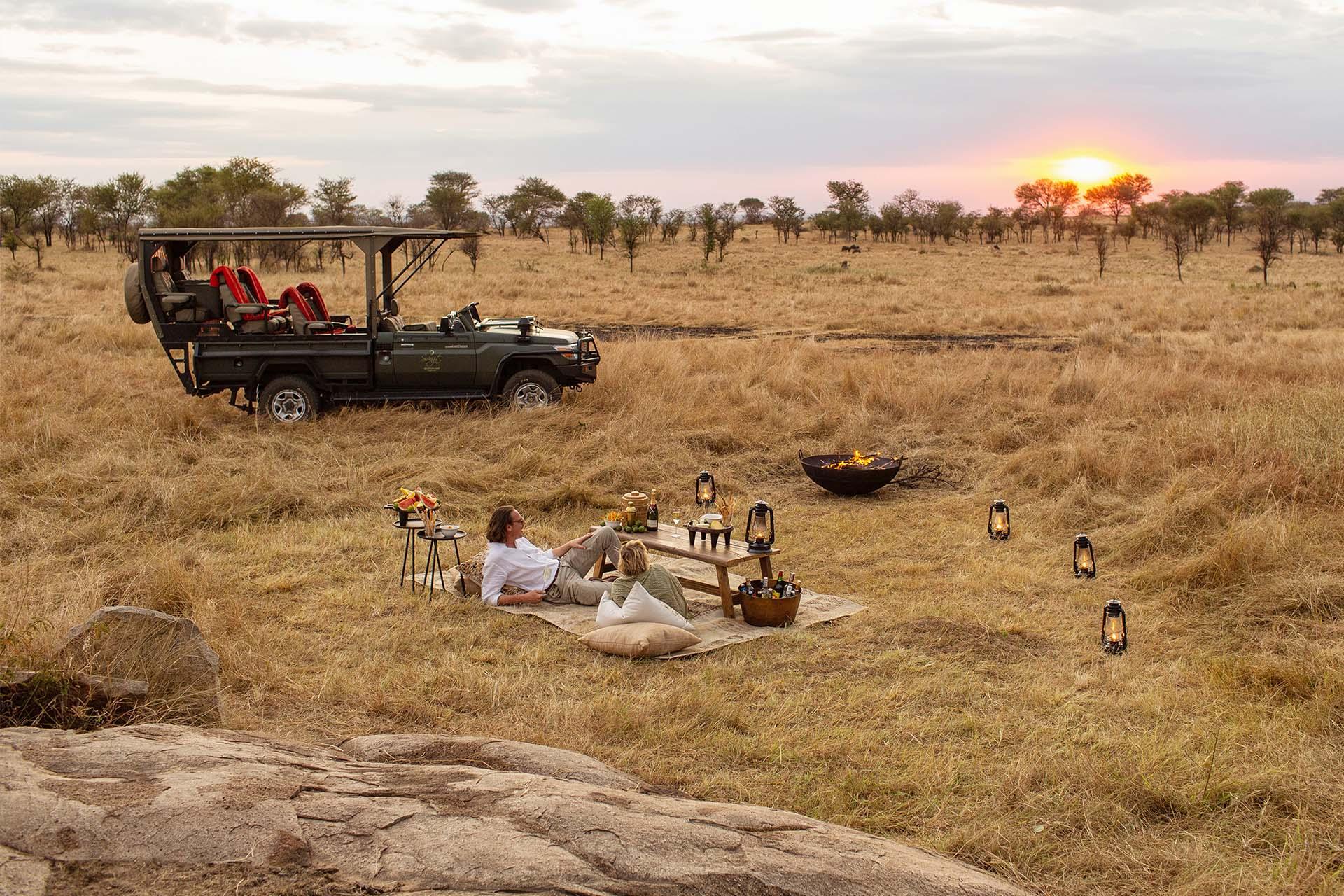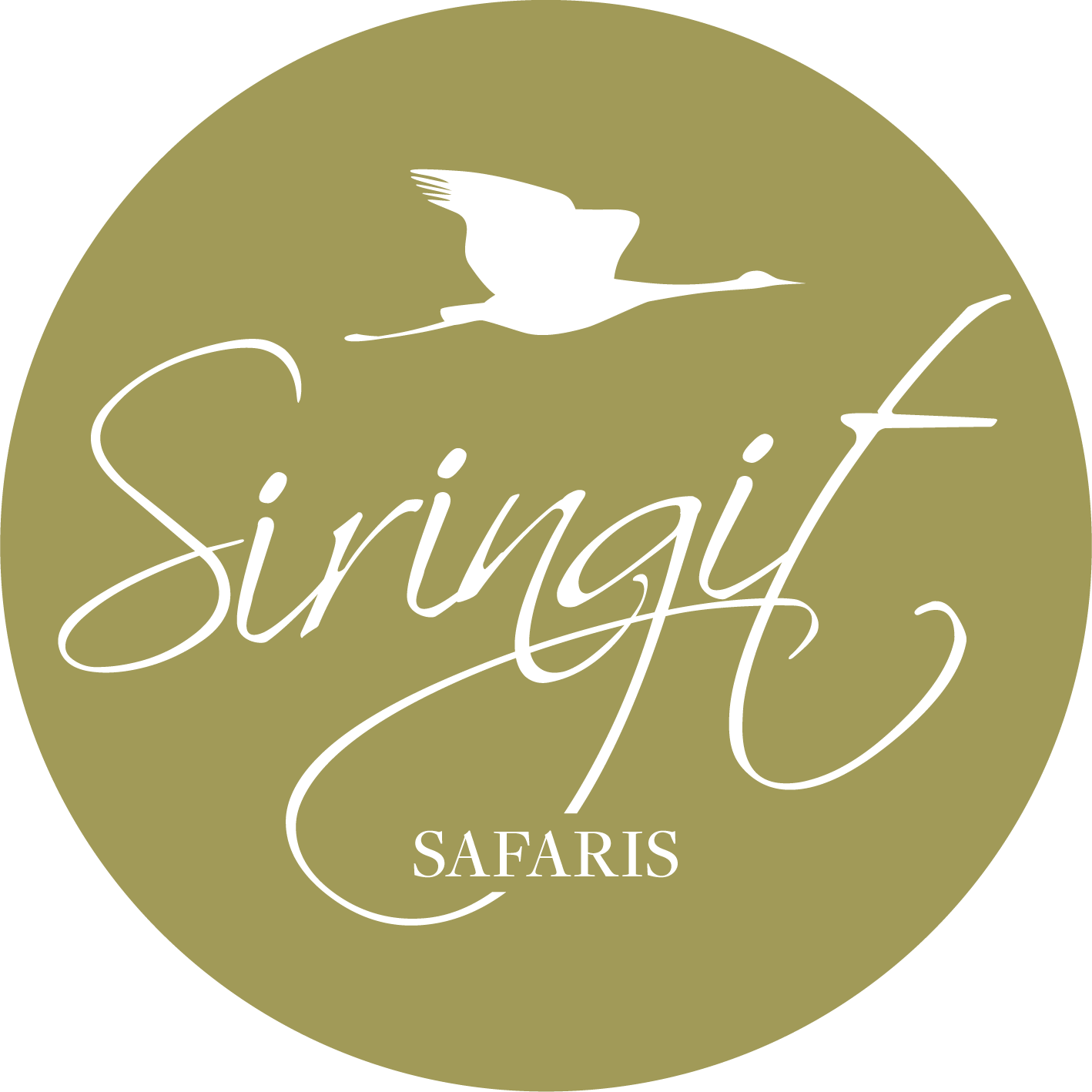The Grass Roots Ratio
August has been a month of stepping into the flow of migration. The rainfall patterns shifting with the change in wind sprouting fresh grass shoots to sustain the movement of herds. It has been a productive month in the growth cycle for the Siringit Collection. The grey clouds of July have lifted to welcome blue skies, golden light and travel has returned to Tanzania. We have witnessed exceptional wildlife sightings in northern and central Serengeti whilst builders and design teams added the final touches to the Siringit Migration Camp in northern Serengeti.
Magnificent migration crossings have been witnessed by the first guests of the Siringit Migration Camp. On golden hour game drives, we have watched a lion pride protecting its kill from the vultures and hyena, a family of cheetah hunting on the Serengeti plains, leopards mating, lion cubs playing in the evening light under a Sausage Tree, a leopard on the hunt, giraffe stooping low to drink, and a family of elephant’s dust bathing in the evening golden light.
Pausing for a moment on safari and spending time in nature, moving with the rhythm of wildlife, listening to the exceptional knowledge of safari guides, watching animal behaviour is fascinating and will awaken the curious mind. Game drives give you a deeper understanding of nature, and in turn, a greater appreciation for life. The harmony instilled as a result of nature’s profound inspirations is transformational.
The golden ratio in life represents perfect harmony, "a single law of nature's design", and can explain how the rainfall patterns inspire migration movements, the symbiosis between species, and the logarithmic spiral of life. Experiencing safari in an open vehicle brings you closer to nature. It opens the door to a deeper profound appreciation for wildlife in its natural habitat. These magnificent and unforgettable safari experiences have drawn our focus to the Siringit game package safari.
Tito Mbise is a professional safari guide for Siringit Collection. He comes from a large family of eight children. Tito was inspired to become a safari guide at a young age under the mentorship of his brother who is also a guide. He has been a professional guide for six years and is fluent in French and English. Tito is passionate about wildlife and sharing his knowledge with his guests. We asked Tito to unpack the Siringit Safari experience for our guests.
Article continues below the picture

What is the great migration and why does it occur?
The great migration is the natural movement of wildebeest, zebra and gazelle, from the season of conception in northern Serengeti and Kenya to the season of calving in southern Serengeti. This cycle of life is led by the patterns of rainfall and the availability of green pastures. There is a symbiotic relationship between zebra and wildebeest. The zebra feed on the harder stems of the grass, grazing through the mature grasslands, and the wildebeest feed on the soft grass shoots. Zebra have better eyesight so they will act as spotters to warn the wildebeest of predators.
The months of August to October are known as the rutting season or season, the season of conception for the wildebeest. This is the time of year when the great migration crosses the Mara River in northern Serengeti and migrates into Kenya following the rain. As the winds shift direction and rain falls again in northern and western Serengeti, the herds will return and start their migration south, through the western corridor and central Serengeti, to calve on the southern plains.
What can we expect to see on game drives in Ndutu?
The southern plains stretch from southern Serengeti into the Ngorongoro Conservation Area. This area covers Ndutu, Lake Ndutu, Lake Masek, and the southern plains which stretch from Naabi Hill Gate in southern Serengeti to the foothills of Ngorongoro in the Ngorongoro Conservation Area. This is a diverse ecosystem ranging from wide-open plains to thick Acacia woodlands. The Siringit Migration Camp will move south opening near Ndutu from 15th December to March.
Between December - March, our guests will visit the south to experience the calving season. Millions of wildebeest and thousands of zebras will spread themselves over the southern plains to prepare to calve. Wildebeest will wait until the conditions are optimal, when there are enough fresh grass shoots, to drop their calves.
This area is alive with life during the calving season. The predators are actively hunting daily, territories are being protected, birds of prey are circling in the blue sky above, lions and cheetah have young cubs. It's a time of new birth and renewal.
Article continues below the picture

What can we expect to see on game drives in central Serengeti?
Central Serengeti is the heart of the Serengeti National Park where you will experience amazing game viewing year-round. This central area called Seronera is where Siringit Serengeti Camp is located. Notoriously known for spectacular sightings of lions, leopards, cheetah, large herds of elephants, buffalo and pods of hippo, central Serengeti has a variety of bird species. The migration passes through Seronera from May - June on its way to the Mara River in Kogatende. Eastern and western Serengeti are easily accessible from Seronera making game drives and wildlife sightings amazing throughout the year.
What is unique about Kogatende in northern Serengeti?
Kogatende and Lobo are parts of northern Serengeti. The Siringit Migration Camp will move to Kogatende with the migrating herds. Our mobile camp will be opening from June - November in the Northern Serengeti. Guests can expect to enjoy fabulous sightings of resident cats; lions, leopards, cheetah along with large herds of elephants, buffalo, hippo, towers of giraffe and plains game. The wildebeest cross the Mara River anytime from July - November. Migration crossings are the highlight of many safaris. The landscape is diverse ranging from rolling hills, rocky kopjes to the endless plains iconic to the Serengeti National Park.
Article continues below the picture

Why do you believe it's important to support National Parks through tourism?
National Parks are essential to conservation because they preserve biodiversity by protecting the ecosystems, the flora and fauna within each ecosystem. National Parks ensure that we protect the environment by mitigating the impacts of climate change. National Parks and the tourism industry encourage the growth of the local economy and therefore are a sustainable model for the conservation of wildlife and the preservation of natural habitats.
How would you explain a Siringit game drive?
It is best to go out on a game drive early in the morning departing from Siringit Serengeti Camp or Siringit Migration Camp around 6.30 am or in the late afternoon between 3.30 pm and 6.30 pm. These are the golden hours when the light is soft and the wildlife is very active. Serengeti National Park is not fenced and wildlife migrates annually throughout the Serengeti and Ngorongoro ecosystem, making it an exceptional experience to see wildlife in its natural habitat on safari. It's fascinating to watch and learn how species interact with each other and with their ecosystem. Siringit game drives are in an open vehicle so you will feel closer to the wildlife. Professional safari guides will help you understand how wildlife is affected by environmental changes.
Article continues below the picture

What are the benefits of booking a game package safari with Siringit?
The Siringit game package safari is an ideal way to experience your safari in Tanzania. The Siringit open vehicle will meet you at the closest airstrip to Siringit Serengeti Camp or Siringit Migration Camp. You will be able to maximise your time on safari as you will fly between properties. Experiencing game drives in an open vehicle allows you to feel at one with the wildlife, to see and understand their behaviour better. Most game package safaris are all-inclusive so our guests receive additional services and the highest quality of care whilst on safari.

Memories for a lifetime




